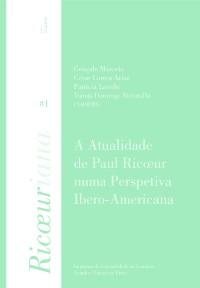Please use this identifier to cite or link to this item:
https://hdl.handle.net/10316.2/90143| DC Field | Value | Language |
|---|---|---|
| dc.contributor.author | Prada Londoño, Manuel | |
| dc.date.accessioned | 2018-03-07T15:46:03Z | |
| dc.date.accessioned | 2020-09-05T11:45:54Z | - |
| dc.date.available | 2018-03-07T15:46:03Z | |
| dc.date.available | 2020-09-05T11:45:54Z | - |
| dc.date.issued | 2017 | - |
| dc.identifier.isbn | 978-989-26-1516-5 (PDF) | |
| dc.identifier.issn | 2184-190X | |
| dc.identifier.uri | https://hdl.handle.net/10316.2/90143 | - |
| dc.description.abstract | This paper explores the thesis according to which victims should be taken as subjects of rights, that is, as what Ricoeur calls “subjects worthy of esteem and respect”. This assumption requires the full exercise of capabilities, which is only possible in mutual recognition scenarios, in which, at the same time, what is at stake is the attestation of the subject who is responsible for the other that appears under the figure of the victim. This paper is organized in five sections preceded by a brief introduction. A general notion of “victim” working as a frame of the reflection is presented in the first and second sections; the third section is devoted to the idea of a “victim as a capable subject”; the fourth section is dedicated to mutual recognition as a requirement for the realization of victims as subjects of rights; the last section presents some general ideas related to attestation of the subject. | eng |
| dc.description.abstract | Este trabajo explora la tesis según la cual las víctimas deben ser asumidas como sujetos de derecho, esto es, como lo que Ricoeur denomina “sujetos dignos de estima y respeto”. Esta asunción requiere el ejercicio pleno de las capacidades, lo cual sólo es posible en escenarios de reconocimiento mutuo, en los que, a su vez, está comprometida la atestación del sujeto responsable del otro en la figura de la víctima. El texto está organizado en cinco apartados precedidos de una breve introducción: en los dos primeros se aborda de modo general la noción de “víctima”; el tercero aborda la idea de “víctima como sujeto capaz”; el cuarto trata del reconocimiento mutuo como escenario de realización de las capacidades de los sujetos, especialmente de las víctimas; y el último apartado hace las veces de conclusión de todo el recorrido. | por |
| dc.language.iso | spa | - |
| dc.publisher | Imprensa da Universidade de Coimbra | por |
| dc.relation.ispartof | http://hdl.handle.net/10316.2/43630 | por |
| dc.rights | open access | - |
| dc.subject | attestation | eng |
| dc.subject | capable man | eng |
| dc.subject | recognition | eng |
| dc.subject | subject of rights | eng |
| dc.subject | victim | eng |
| dc.subject | atestación | por |
| dc.subject | hombre capaz | por |
| dc.subject | reconocimiento | por |
| dc.subject | sujeto de derecho | por |
| dc.subject | víctima | por |
| dc.title | La víctima como sujeto capaz: a propósito del conflicto colombiano | por |
| dc.title.alternative | The Victim as a capable subject: notes on the Colombian conflict | eng |
| dc.type | bookPart | por |
| uc.publication.firstPage | 111 | - |
| uc.publication.lastPage | 144 | - |
| uc.publication.location | Coimbra | por |
| dc.identifier.doi | 10.14195/978-989-26-1516-5_3 | - |
| uc.publication.digCollection | PB | por |
| uc.publication.orderno | 3 | - |
| uc.publication.area | Artes e Humanidades | por |
| uc.publication.bookTitle | Ricœuriana 1: a atualidade de Paul Ricœur numa perspetiva Ibero-Americana | - |
| uc.publication.manifest | https://dl.uc.pt/json/iiif/10316.2/90143/201849/manifest?manifest=/json/iiif/10316.2/90143/201849/manifest | - |
| uc.publication.thumbnail | https://dl.uc.pt/retrieve/11030120 | - |
| uc.publication.parentItemId | 55059 | - |
| uc.itemId | 68379 | - |
| item.fulltext | With Fulltext | - |
| item.grantfulltext | open | - |
| Appears in Collections: | Ricœuriana 1: a atualidade de Paul Ricœur numa perspetiva Ibero-Americana | |
Files in This Item:
| File | Description | Size | Format | |
|---|---|---|---|---|
| la_victima_como_sujeto_capaz.pdf | 254.04 kB | Adobe PDF |  |
Items in DSpace are protected by copyright, with all rights reserved, unless otherwise indicated.
